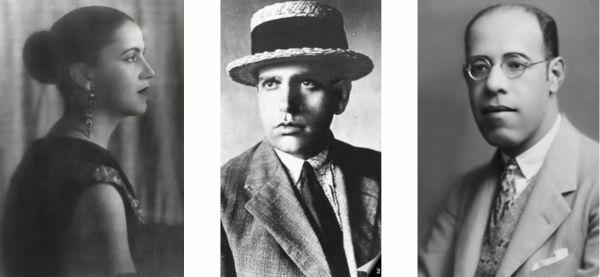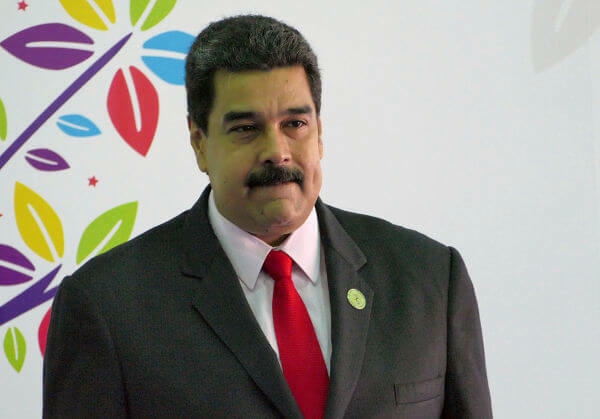O brazilwood movement was an artistic-literary project inserted in the first phase of Brazilian modernism (1922-1930). Its creator was the writer Oswald de Andrade. He published the Pau-Brasil Poetry Manifesto, in 1924, in the newspaper Morning mail. The conversations he had with the French author Blaise Cendrars were the main inspiration for the creation of the movement.
With a nationalist nature, the pau-brasil movement valued the Brazilian ethnic and cultural heritage and led to the production of works such as the poetry book brazilwood, by Oswald de Andrade; until then favela hill, by Tarsila do Amaral; and the book of poems tortoise clan, by Mario de Andrade.
Read too: Brazilian modernism — the period style that broke with all the aesthetic tradition proposed until then
Summary about the brazilwood movement
The pau-brasil movement was an artistic-literary project that was part of the first phase of Brazilian modernism.
It appeared in 1924 with the publication of the Pau-Brasil Poetry Manifesto.
It presented a nationalist nature and defended the production of export poetry.
The modernist poet Oswald de Andrade was its creator.
The anthropophagic movement, also created by Oswald de Andrade, can be seen as an evolution of the pau-brasil movement.
What was the pau-brasil movement?
The pau-brasil movement was a artistic-literary project that was part of the first phase of Brazilian modernism (1922-1930). Its creator was the author Oswald de Andrade, inspired by the French writer Blaise Cendrars (1887-1961). Thus, the movement emerged with the publication, in 1924, of Pau-Brasil Poetry Manifesto, written by Oswald de Andrade.
This poet then published, in 1925, the book brazilwood, in which he put into practice the ideas of this nationalist movement. such an artistic current had as main objective to reflect on the national primitiveness. The name of the movement is due to the brazilwood, export tree at the beginning of Brazilian colonization.
Historical context of the pau-brasil movement
The brazilwood movement appeared in 1924, with the publication of Pau-Brasil Poetry Manifesto. This modernist movement appeared in the last years of the Old Republic, historical period characterized by traditionalism.
In 1930, the Vargas Era began, a politically troubled period, marked by authoritarianism. the modernism it is, therefore, an artistic-literary movement that opposes both traditionalism and authoritarianism.
Characteristics of the brazilwood movement
Nativist or primitivist character
Focus on national elements
Elevation of primitive exoticism
Search for Brazilianness or national identity
Valuing Brazilian ethnic and cultural roots
Incentive to an export poetry, with Brazilian characteristics
modernist formal freedom
Who participated in the pau-brasil movement?

The pau-brasil movement generated much discussion among artists and intellectuals at the time and received the support of poets such as Manuel Bandeira (1886-1968) and Carlos Drummond de Andrade (1902-1987). However, in practice, these three artists stood out:
Tarsila do Amaral (1886-1973);
Oswald de Andrade (1890-1954);
Mario de Andrade (1893-1945).
Main works of the brazilwood movement
Pau-Brasil Poetry Manifesto (1924), by Oswald de Andrade
favela hill (1924), painting by Tarsila do Amaral
carnival in madureira (1924), painting by Tarsila do Amaral
brazilwood (1925), poems by Oswald de Andrade
tortoise clan (1927), poems by Mário de Andrade
Pau-brasil poetry manifesto, by Oswald de Andrade
O Pau-Brasil Poetry Manifestowas published on March 18, 1924, in Morning mail. In this text, the poet Oswald de Andrade, who signs the document, passionately exposes the ideas of the pau-brasil movement. Thus, the manifesto values facts, reality, as the subject of poetry, and praises the culture and riches of Brazil:
Poetry exists in facts. The saffron and ocher huts in the green of the Favela, under the goat's blue, are aesthetic facts.
Carnival in Rio is the religious event of the race. Pau-Brasil. Wagner submerges before the Botafogo cordons. Barbarian and ours. A rich ethnic background. Vegetable richness. The ore. The kitchen. Vatapá, gold and dance.
The writer begins to characterize pau-brasil poetry:
[...]
Poetry for Poets. Joy of those who don't know and discover.
There had been the inversion of everything, the invasion of everything: thesis theater and the fight on stage between morals and immorals. The thesis must be decided in a war of sociologists, of men of law, fat and golden as Corpus Juris.
Agile the theater, son of the acrobat. Agile and illogical. Agile romance, born of invention. Agile poetry.
Pau-Brasil poetry. Agile and candid. Like a child.
He mentions Cendrars, a French author who inspired Oswald to create the movement. In addition, he attacks academicism and values popular language, orality:
A suggestion from Blaise Cendrars: —You've got the locomotives full, you're going to leave. A black man turns the handle of the rotary detour you are on. The slightest oversight will make you leave in the opposite direction to your destination.
Against cabinetism, the cultured practice of life. Engineers instead of jurists, lost like Chinese in the genealogy of ideas.
The language without archaisms, without erudition. Natural and neological. The millionaire contribution of all mistakes. As we speak. As we are.
There is no struggle in the land of academic vocations. There are only uniforms. Futurists and others.
So he argues that poetry should be an export product, since it is also one of the riches of Brazil: “A single struggle — the struggle along the way. Let's share: Import poetry. And Pau-Brasil Poetry, for export”. Still, when talking about the past, he criticizes naturalism and ironizes Parnassianism:
There has been a phenomenon of aesthetic democratization in the five wise parts of the world. Naturalism was instituted. Copy. A picture of sheep that wasn't really wool, it wouldn't do. Interpretation in the oral dictionary of the Schools of Fine Arts meant reproducing exactly the same... Came to pyrogravure. Girls from every home became artists. The camera appeared. And with all the prerogatives of big hair, dandruff and the mysterious genius with a turned-eye – the artist photographer.
[...]
The only thing that wasn't invented was a machine to make verses — there was already the Parnassian poet.
It exposes more characteristics of pau-brasil poetry:
[...]
the synthesis
The balance
the finish of car series
the invention
The surprise
a new perspective
a new scale
Any natural effort in this direction will be good. Pau-Brasil poetry.
The work against naturalistic detail — by synthesis; against romantic morbidity — for geometrical balance and technical finish; against copying, invention and surprise.
A new perspective.
[...]
Finally, he praises the art of his time and, therefore, the present moment:
Our age heralds a return to pure meaning.
A painting is lines and colors. The statuary are volumes under the light.
Poesia Pau-Brasil is a Sunday dining room, with birds singing in the woods summarized in the cages, a skinny guy composing a waltz for flute and Maricota reading the newspaper. In the newspaper walks all the present.
No formula for the contemporary expression of the world. See with free eyes.
[...]
The work of the Futurist generation was cyclopean. Setting the national literature empire clock.
After this step, the problem is different. To be regional and pure in its time.
The state of innocence replacing the state of grace that can be an attitude of the spirit.
The counterweight of native originality to crippling academic membership.
[...]
See too: European vanguards — artistic movements that influenced Brazilian modernism
Pau-brasil movement and anthropophagic movement
Both the pau-brasil movement (1924) and the anthropophagic movement (1928) had a nationalist character. Both movements were idealized by the modernist writer Oswald de Andrade. It is possible to say that modernist anthropophagy is an evolution of brazilwood poetry.
At the Pau-Brasil Poetry Manifesto, Oswald launches the proposal of making poetry for export, in which the elements of Brazilian culture are valued. In this context, the pau-brasil movement seeks to highlight our ethnic and cultural characteristics. no longer Anthropophagic Manifesto, Oswald broadens his idea of nationalism.
This is because he starts to consider the historical foreign influence as part of our culture. His proposal is that modernist artists “eat” foreign culture, that is, assimilate what is good about it, in order to transform the “loan” into something with a Brazilian identity.
image credit
[1] National Archive Collection / Wikimedia Commons (reproduction)
Sources
ABAURRE, Maria Luiza M.; PONTARA, Marcela. Brazilian literature: times, readers and readings. 3. ed. São Paulo: Editora Moderna, 2015.
ANDRADE, Oswald de. Pau-brasil poetry manifesto. Available in: https://www.ufrgs.br/cdrom/oandrade/oandrade.pdf.
ASSUNÇÃO, Isac Teixeira de. Linguistic historiography of the anthropophagic movement: for a popular literature for the consolidation of the Brazilian language and identity. 2010. 87 f. Dissertation (Master in Literature and Linguistics) – Faculty of Letters, Federal University of Goiás, Goiânia, 2010.
BOAVENTURA, Maria Eugenia. The pau brasil project: nationalism and inventiveness. End of Evils, Campinas, v. 6, 2012.
JACQUES, Paola Berenstein. wild thoughts: assembly of another inheritance. v. 2. Salvador: EDUFBA, 2021.
By Warley Souza
Literature Teacher
Source: Brazil School - https://brasilescola.uol.com.br/literatura/movimento-pau-brasil.htm



